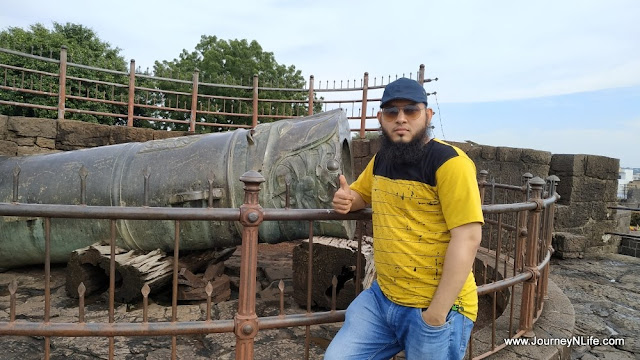One day Trip to Bijapur from Gulbarga
11:00:00
Bijapur, officially known as Vijayapura, is the district headquarters of Bijapur District of Karnataka state of India. Bijapur city is well known for its historical monuments of architectural importance built during the rule of the Adil Shahi dynasty.
Vijayapura, one of the popular heritage city located in the Karnataka state of India is also one of the top ten populated cities in Karnataka. Among the other historical attractions at Bijapur, some notable ones are the Anand Mahal, Jod Gumbaz, Jumma Masjid etc. The Ibrahim Rouza and the Gol Gumbaz are the most impressive monuments at Bijapur.
 |
| Ibrahim Roza |
We started from Gulbarga around 7 am in the morning and reached back around 10 PM with memorable memories.
Gol Gumbaz is a tomb of Adil Shah in Bijapur, Karnataka. Mohammed Adil Shah, the 7th ruler of Adil Shahi Dynasty ordered to build this tomb before his death. The simple yet charming design of Gol Gumbaz is an example of architectural excellence of Bijapur. For more details please do visit my previous post on Gol Gumbaz
Gagan Mahal or Heavenly Palace was built by Ali Adil Shah I in 1561 as a royal palace with a durbar hall. It has three impressive arches and the central arch is the widest. The durbar hall was located in the ground floor while the first floor was built as the private residence of the royal family.
Bara Kaman
The Bara Kaman was built in 1672AD, by Ali Adil Shah II, and was supposed to be the burial mausoleum for the king and his wives. However, before the Bara Kaman could be completed, Ali Adil Shah II was murdered by his own father Muhammad Adil Shah, who did not want the Bara Kaman to lessen the glory of the Gol Gumbaz. Bara Kaman has the tombs of Ali Adil Shah II, his wife Chand Bibi, his mistresses and his daughters.
Malik-e-Maidan, considered as one of the largest bell metal guns in the world, is situated around 3 km away from Bijapur District. Meaning of the word ‘Malik-e-Maidan’ is 'The Monarch of the Plains’. It was built in 1549 by Ali Adil Shah I and was considered as a war trophy. It is 4.45 metres long, has a diameter of 1.5 metres and weighs 55 tons. The cannon is sitting on top of the Sherzah Burj facing west towards the plains outside the city. It is believed that the legendary cannon always remains cool and tinkles like a bell on tapping. The nozzle of the gun is shaped like the head of a lion with open jaws. Between the carved fangs of the lion is depicted an elephant being crushed to death. On top of the cannon is an inscription commissioned by Aurangzeb.
 |
| Our Ride partner for this road trip to Bijapur |
 |
| We from left (Myself, Maqdum, Ismail, Mustafa and Zameer bhai) |
 |
| Windmills on the way towards Bijapur |
 |
| Gol Gumbaz |
 |
| Gol Gumbaz |
 |
| Gagan Mahal |
 |
| Gagan Mahal |
The Bara Kaman was built in 1672AD, by Ali Adil Shah II, and was supposed to be the burial mausoleum for the king and his wives. However, before the Bara Kaman could be completed, Ali Adil Shah II was murdered by his own father Muhammad Adil Shah, who did not want the Bara Kaman to lessen the glory of the Gol Gumbaz. Bara Kaman has the tombs of Ali Adil Shah II, his wife Chand Bibi, his mistresses and his daughters.
 |
| Bara Kaman |
 |
| Bara Kaman |
 |
| Bara Kaman |
 |
| Myself at Malik-e-Maidan |
 |
| Malik-e-Maidan |
Ibrahim Roza is another valuable and most stylish architectural example of the Adil Shahi style of architecture. Ibrahim Adil Shah II, one of the sultans of this dynasty, developed and organized his own final resting place. Ibrahim Roza consists of two core constructions: a tomb and a mosque with several smaller structures. All these buildings are built within a square enclosure with an attractive garden in the front. Both the structures are built on a platform that is 360 feet long and 160 feet wide, around a walled enclosure.
 |
| Ibrahim Roza |
 |
| Ibrahim Roza |
 |
| Ibrahim Roza |
 |
| Ibrahim Roza |
Other places to visit in Bijapur (Vijayapura):
- Gol Gumbaz
- Bara Kaman
- Ibrahim Roza
- Malik-E-Maidan
- Gagan Mahal
- Jamia Masjid, Bijapur Fort




















.jpg)


0 comments